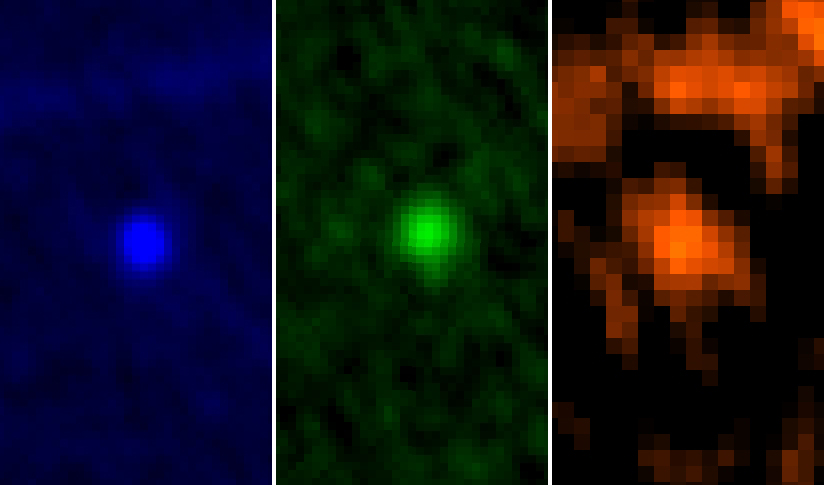| Basic Information | |
| What is this? | The asteroid Apophis, which passed by the Earth in January 2013 |
| Where is it in the sky? | It whizzed past the Earth very quickly, and moves around the sky as it orbits the Sun |
| How big is it? | Herschel has shown that the asteroid is around 325 metres in diameter |
| How far away is it? | The asteroid came within 15 million km of Earth, though it will get closer in the future |
| What do the colours represent? | The different colours in the 3-colour image show the asteroid at three wavelengths |
Downloads
See this object in:
Apophis is one of a fairly large number of asteroids that pass very close to Earth. In 2029, it will return and pass within around 36,000 km – closer than some of our satellites! As it passed by in January 2013 Herschel took images to get better estimates of its size.
On 9 Jan 2013 Apophis passed within around 15 million km of Earth. A few days previously, Herschel had its best chance of observing it, though it was a challenge. Moving at over 3 km/s (7000 mph) relative to the Earth, from Herschel’s point of view Apophis tracked across the sky faster than anything it had seen before.
Herschel’s observations of Apophis were taken with the PACS camera in three far-infrared wavelengths, or colours. They show that the asteroid is around 325 m across – around 20% larger than previous best estimates. By looking at the colour of the asteroid in these far infrared wavelengths, astonomers have been able to model the temperature of its surface and its reflectivity.

The temperature and reflectivity of the asteroid’s surface have an impact on something called the Yarkovsky effect. This is the effect that the Sun’s light can have on the asteroid’s orbit, which will in turn affect how close to Earth it comes in the future.
Although Apophisis does come close to the Earth, and is therefore called a “potentially hazardous asteroid”, it does not pose a danger for the forseable future. After 2029 its next relatively pass of the Earth will be 2036, though the exact distance is hard to predict. As well as the Yarkovsky effect, the Earth’s gravity will adjust its orbit slightly, and make future predictions a little more uncertain. We are (for now) safe from Apophis.

